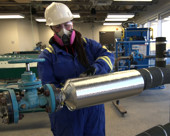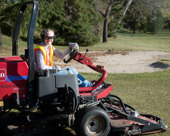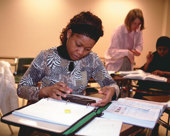You’ve already learned thousands of things in your life. Just being on this page means you’ve learned to read, handle an electronic device, and navigate the internet.
But like all of us, you probably find some lessons more challenging than others. The following tips and strategies can help you become an even better learner.
Be enthusiastic
Think of each new learning task as a way to discover something interesting:
- Can it affect your life?
- Can you connect it to things you’ve learned in the past?
- Can you use the new skill or knowledge in different situations?
- How does this piece of information fit into the way the world works?
Don’t be afraid to ask questions about what you’re learning. When you find details that fit your interests, they’ll be easier to remember.
Use memory tricks
Also called mnemonic devices, memory tricks include creating rhymes, words, or images that will help you remember details.
A trick can be as simple as using a word like HOMES to remember the 5 Great Lakes: Huron, Ontario, Michigan, Erie, and Superior. Or you can create nonsense sentences. For example, these sentences use a keyword from each heading on this page: “Enthusiastic tricks build goals. Practise and teach focus styles.”
Look up “mnemonic device” online to create your own memory tricks.
Set specific study goals
Setting specific goals will help you become a better learner. You can base your goals on:
- The grades you want, such as 80% on an upcoming exam
- The habits you’d like to develop, such as starting each essay 10 days before it’s due
- The tasks you need to complete, such as making notes on a textbook chapter before you go to bed
Take the time to focus
Multitaskers were once seen as being more efficient. Research now shows that jumping from one task to another, especially as tasks become more complex, is less efficient and more likely to create mistakes.
It’s the same for studying. Avoid distractions such as social media or the hockey game. Focus on one subject at a time. Take the breaks you need, but allow yourself enough time to complete a study goal.
Practise what you learn
Use it or lose it. Learning a language? Watch a foreign language film or chat with a native speaker. Picking up a new skill? Whether it’s your golf stroke, your pastry making, or your anger management, it won’t improve if you don’t apply what you’ve learned. Do the exercises and try out the new techniques while they’re still fresh in your memory.
Teach what you have learned
Giving a presentation, writing a blog post, or creating a podcast are all great ways to teach your new skills or knowledge. You’re taking information, putting it into your own words, and sharing it with others.
Even discussing aspects of what you’ve learned during a walk or meal with a friend or family member can make ideas more solid. Encourage questions or comments and respond to them.
Feed your learning style
Most of us prefer to learn in a particular way. By recognizing your learning style, you can use relevant strategies to become a better learner. While learners may use a blend of styles, most fall into 1 of these 3 categories:
- As a visual learner, you absorb details by watching or seeing. You prefer diagrams, symbols, videos, and graphs over straight lectures. You notice details such as missing buttons or misspelled words.
To feed your learning style, visualize how you would handle an experiment or react if you were present for an event in history. While you’re taking notes, use highlighters of various colours for different concepts. Insert boxes or graphs into your notes so you can visualize the details better. - As an auditory learner, you prefer to listen. You’re a good verbal communicator, and you often discuss your ideas and talk about what needs to be done before actually doing it.
To feed your learning style, take part in discussion groups and leave space in your lecture notes to add what you’ve learned after talking it through with others. Read your textbooks and notes out loud. Record these readings so you can listen to them again as you prepare for tests. - As a kinesthetic learner, you learn best when you’re actively doing something. You want hands-on experiences and trial-and-error activities. You love moving and can become fidgety if you have to stay still.
To feed your learning style, make lots of notes during lectures and take active breaks while you’re studying. Pick a different flavour of gum for each subject and chew that during those particular classes, study periods and tests. Use practice questions and exams.
You can use many of these strategies regardless of your learning style. By trying out new ways to learn, you’ll become a more well-rounded and successful learner.

















